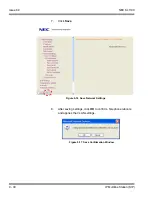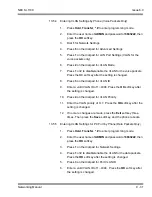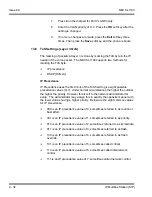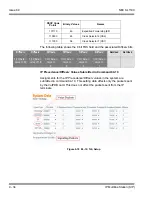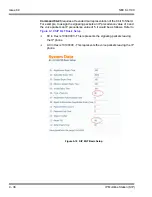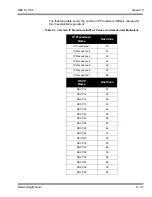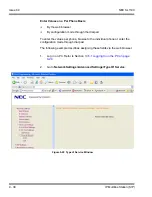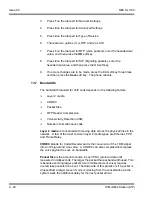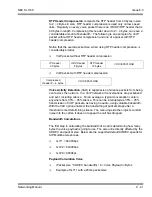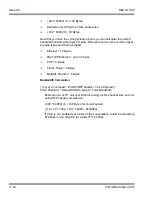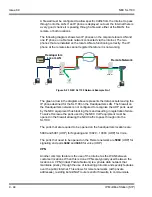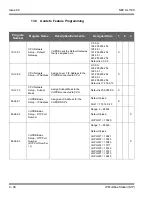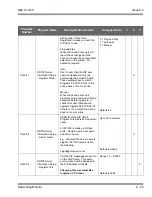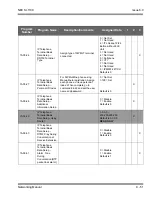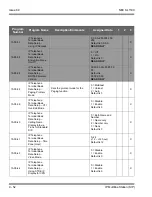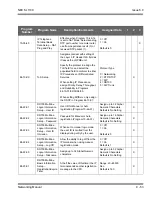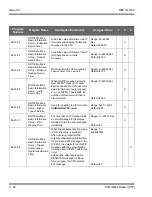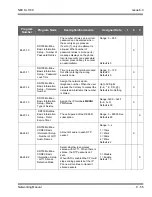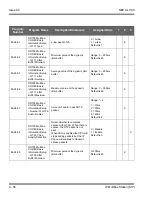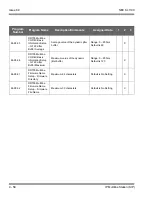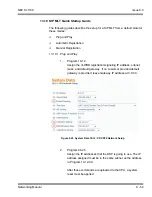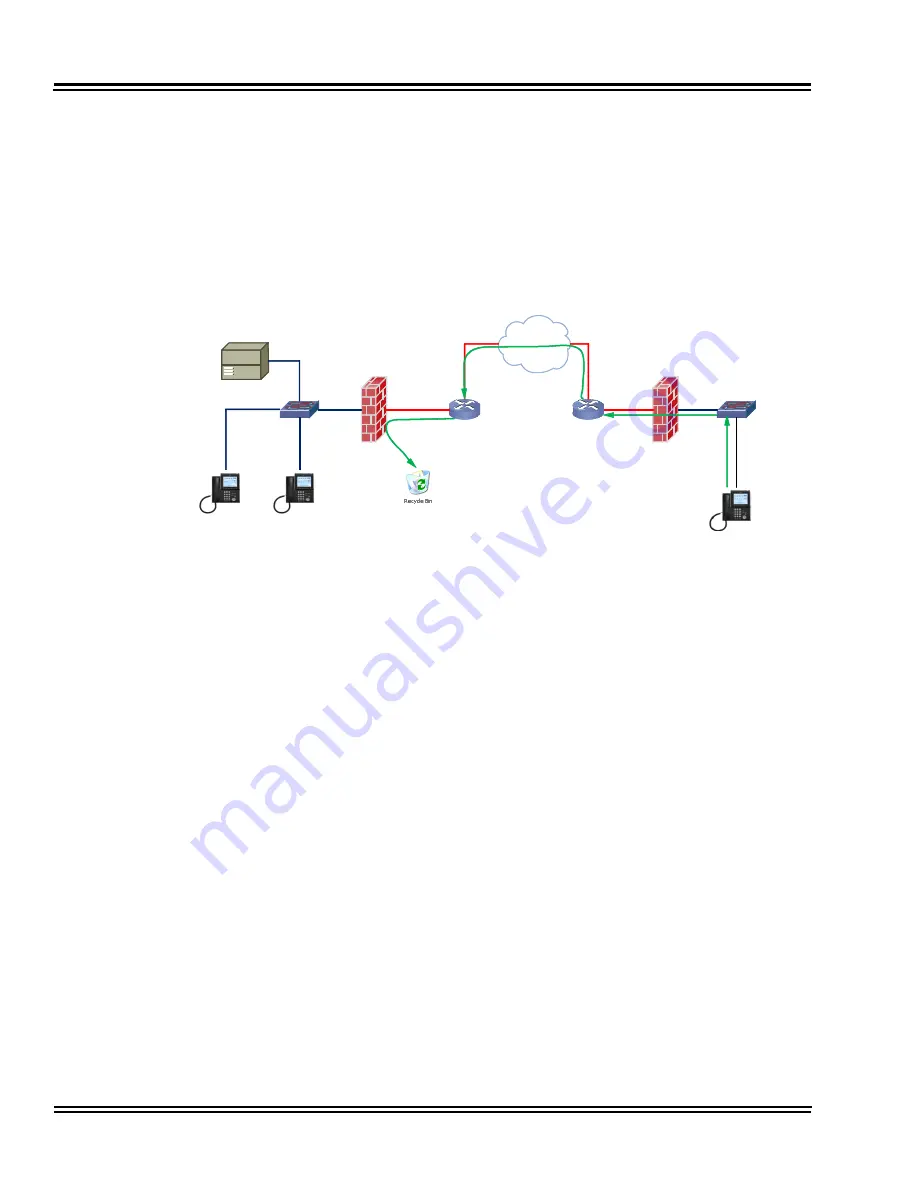
Issue 6.0
NEC SL1100
9 - 44
IP Multiline Station (SIP)
A firewall must be configured to allow specific traffic from the Internet to pass
through onto the LAN. If an IP phone is deployed out over the Internet there is
a very good chance it is passing through a firewall, either at the MAIN, the
remote, or both locations.
The following diagram shows two IP phones on the corporate local LAN and
one IP phone on a Remote network connected via the Internet. The two
phones that are installed on the local LAN are functioning correctly. The IP
phone at the remote site cannot register therefore it is not working.
The green arrow in the diagram above represents the data packets leaving the
IP phone destined for the SL1100 on the Headquarters LAN. The firewall on
the Headquarters network is not configured to recognize the UDP ports used
by the NEC equipment thus blocking them and resulting in registration failure.
To solve this issue the ports used by the NEC VoIP equipment must be
opened in the firewall allowing the NEC traffic to pass through onto the
SL1100.
The ports that are required to be opened on the headquarters locations are:
5080 and 5081 (UDP) for Signaling and 10020 ~ 10083 (UDP) for Voice.
The ports that need to be opened on the Remote network are
5060
(UDP) for
signaling and ports
3462
and
3463
for voice (UDP).
VPN
Another common feature is the use of the Internet as the WAN between
customer locations. When this is done VPNs are typically used between the
locations. A VPN (Virtual Private Network) is a private data network that
maintains privacy through the use of tunneling protocols and security features
over the public Internet. This allows for remote networks (with private
addresses), residing behind NAT routers and/or firewalls, to communicate
Figure 9-23 NEC SL1100 Network Example No. 1
Internet
Headquarters
Local LAN
Remote Network
Firewall
Firewall
Summary of Contents for SL1100
Page 1: ...Networking Manual NDA 31190 Issue 6 0 SL1100...
Page 2: ......
Page 4: ......
Page 22: ...Issue 6 0 NEC SL1100 1 2 Introduction THIS PAGE INTENTIONALLY LEFT BLANK...
Page 62: ...Issue 6 0 NEC SL1100 5 30 Programming THIS PAGE INTENTIONALLY LEFT BLANK...
Page 94: ...Issue 6 0 NEC SL1100 6 32 Network Design Considerations THIS PAGE INTENTIONALLY LEFT BLANK...
Page 134: ...Issue 6 0 NEC SL1100 8 10 DHCP Client THIS PAGE INTENTIONALLY LEFT BLANK...
Page 159: ...NEC SL1100 Issue 6 0 Networking Manual 9 25 Figure 9 7 Log In to IP Phone...
Page 181: ...NEC SL1100 Issue 6 0 Networking Manual 9 47 Figure 9 25 IP System Operation Setup...
Page 206: ...Issue 6 0 NEC SL1100 9 72 IP Multiline Station SIP Figure 9 36 NAPT Configuration Example...
Page 230: ...Issue 6 0 NEC SL1100 10 18 IP Single Line Telephone THIS PAGE INTENTIONALLY LEFT BLANK...
Page 232: ...Issue 6 0 NEC SL1100 11 2 NAPT Figure 11 1 NAPT Configuration Example...
Page 242: ...Issue 6 0 NEC SL1100 12 4 All DSP Busy Indication THIS PAGE INTENTIONALLY LEFT BLANK...
Page 290: ...Issue 6 0 NEC SL1100 13 48 SL Net THIS PAGE INTENTIONALLY LEFT BLANK...
Page 291: ......
Page 292: ...SL1100 Networking Manual NEC Corporation of America Issue 6 0...

